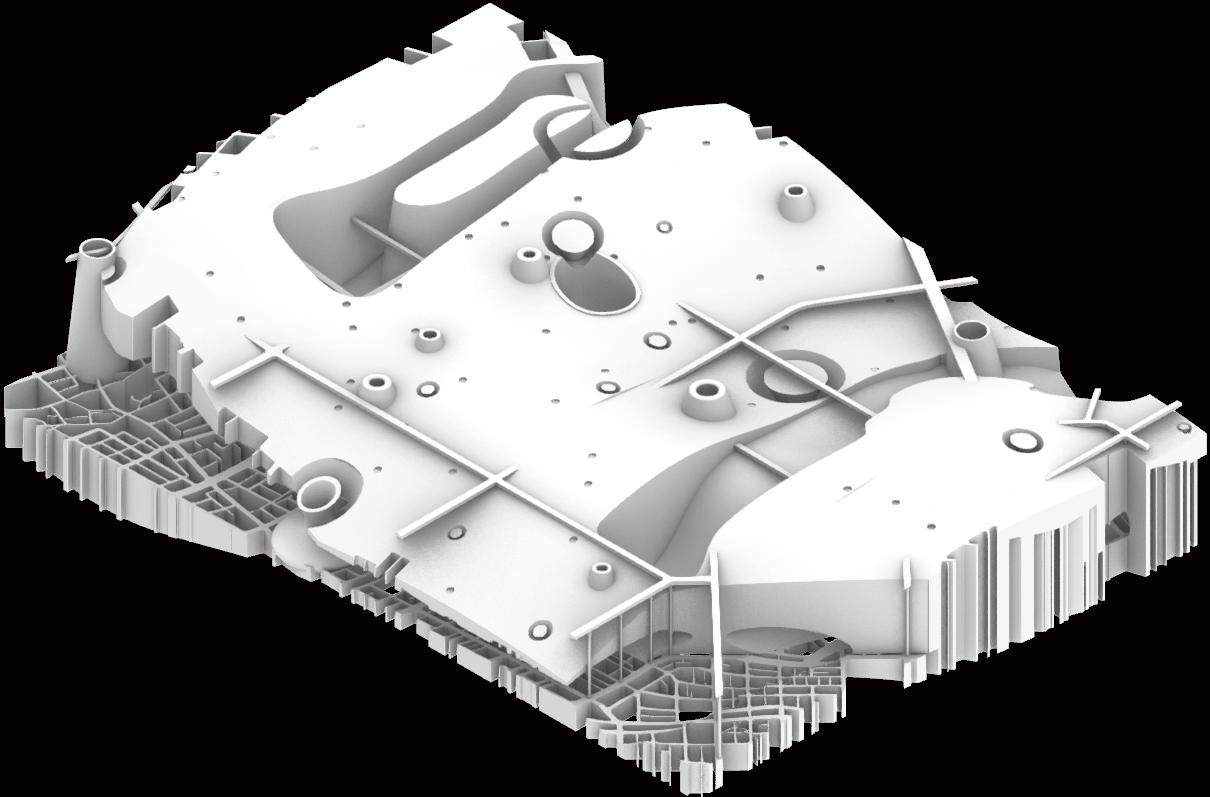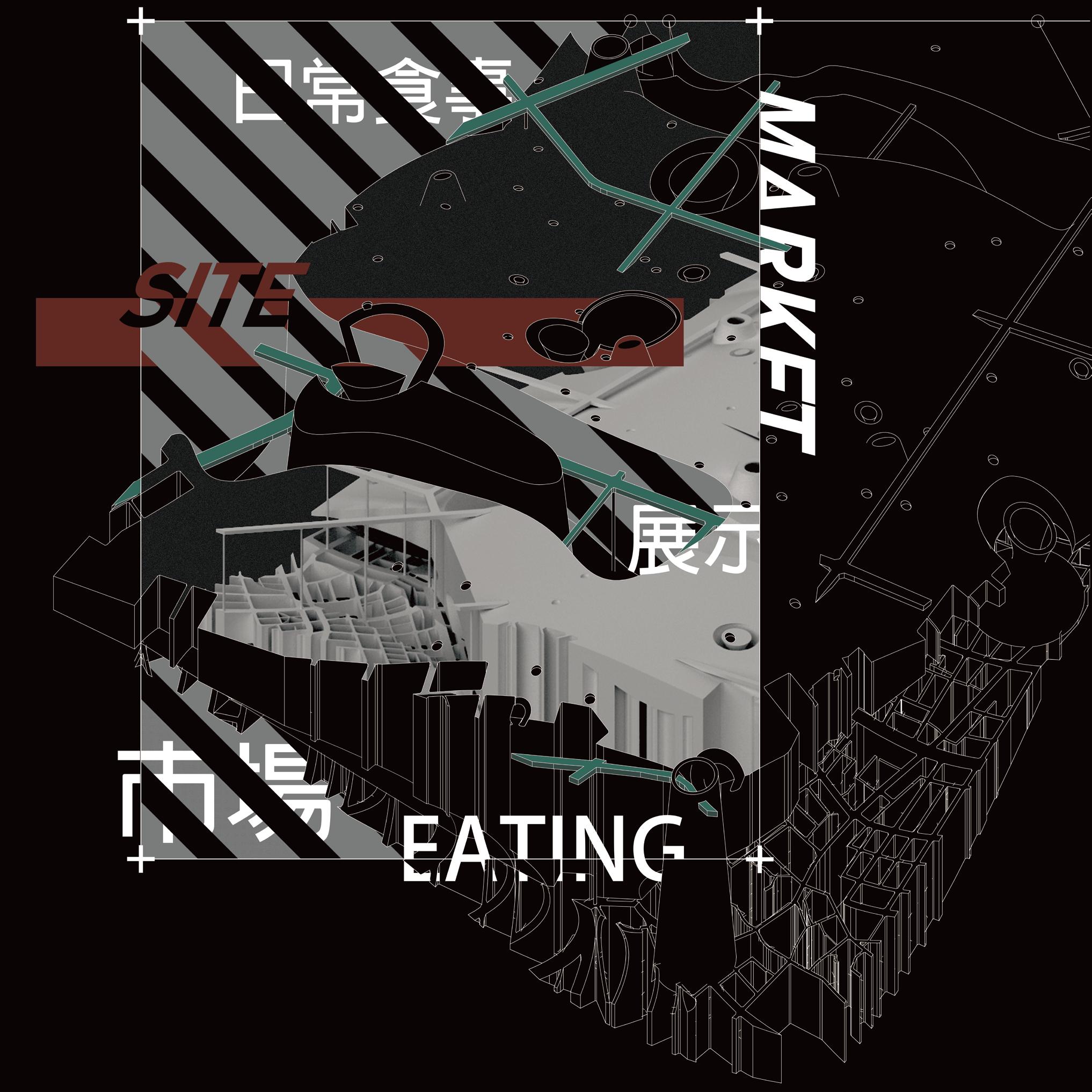BACK TO DAILY






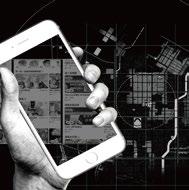
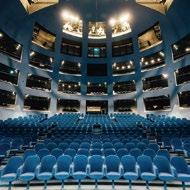

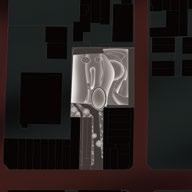


In the past three years, the global epidemic has heated up, and people's daily life has changed. Restrictions on the number of people in public places, remote teaching in schools, and the carrying of masks all affect the life of epidemic prevention all the time.
Among them, diet is undoubtedly the most important part of daily needs. The eating habits of self-collection or in-store dining in the past have gradually changed, and the popularity of delivery platforms has gradually increased.
However, when the delivery market was rapidly rising, a large number of delivery drivers appeared in the streets and alleys at one time. The original traffic system and the nature of the commercial area were unable to carry and adapt to this trend, resulting in people waiting for food outside the store. The drivers parked the vehicles randomly, and the traffic became more chaotic. Therefore, we try to solve this problem through the transformation of daily commercial space, so as to achieve a future living space that conforms to the transformation of consumers, and propose a future urban vision.
Address: No. 138, Dadun 11th Street, Nantun District, Taichung City
Land Planning: Housing 2
Statutory construction rate: 60%
Legal floor area ratio: 220%
Back off: -
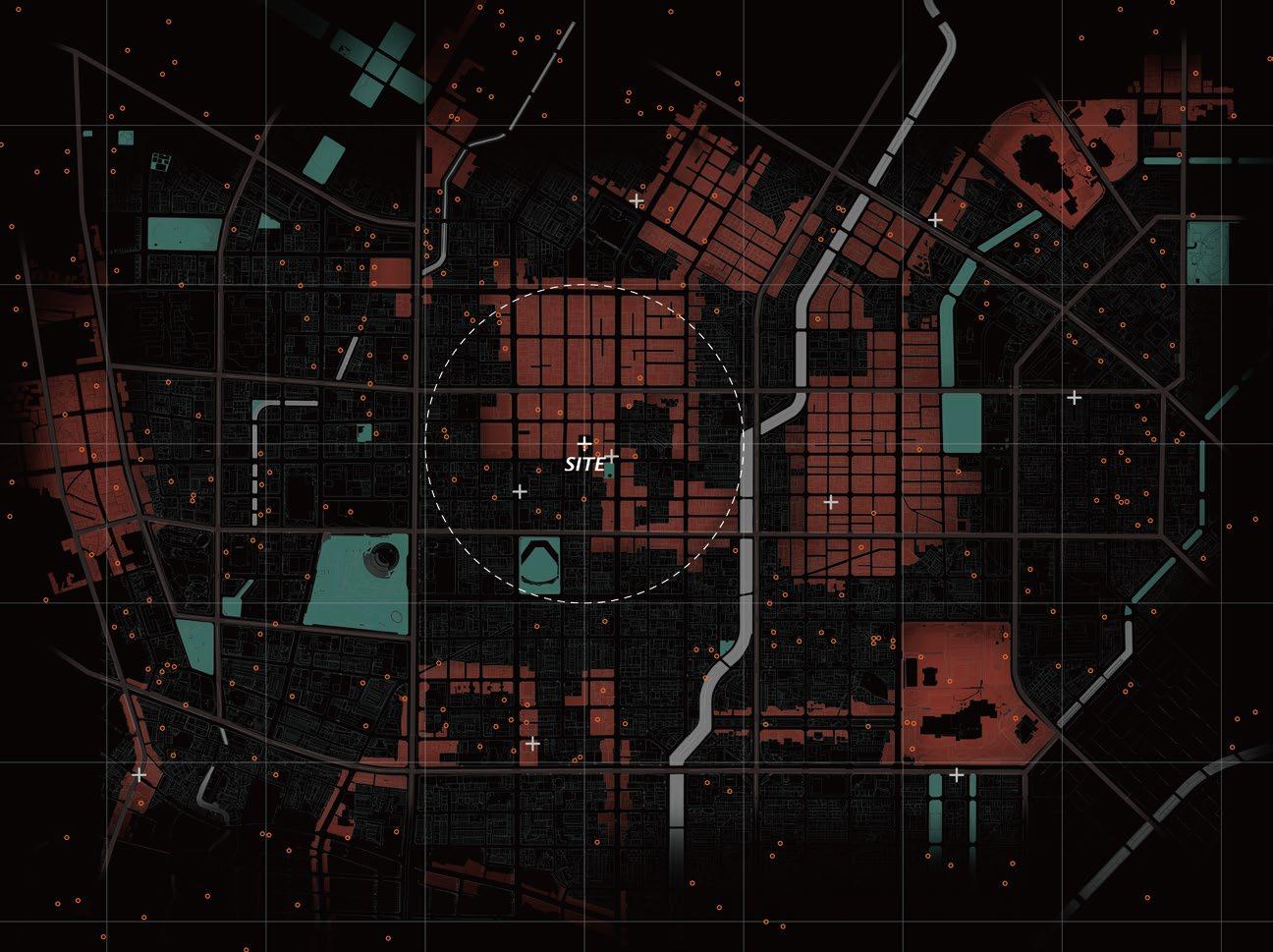
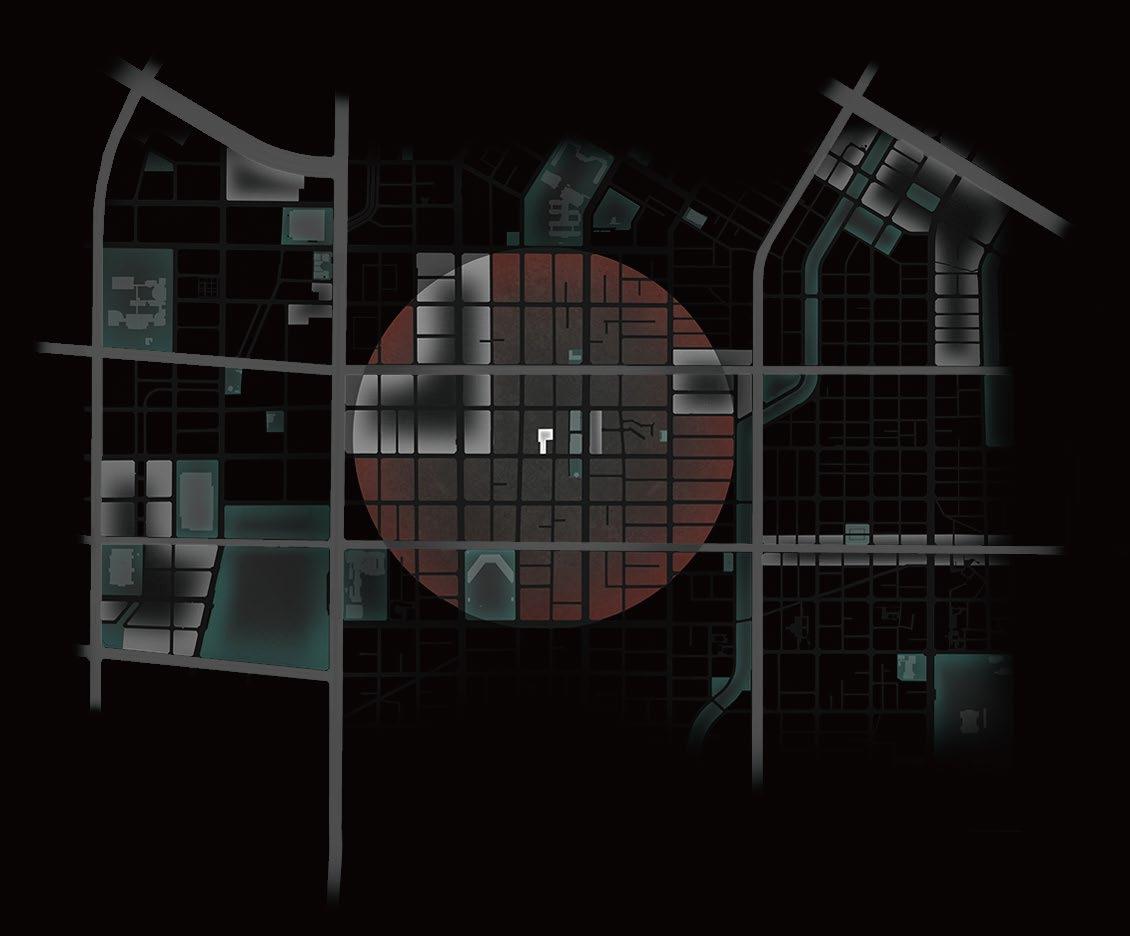
Traffic
Land
In the site analysis, we first observed the meaning of the title "SUBLIME", trying to find the underlying facts behind those noble surfaces in the city, and to understand future trends through exposure and scrutiny. When we actually visited the streets, we observed two directions. First, the huge number of parking lots, which is an important item for us to analyze the actual situation of the city; Second, large amounts of stores that have been hardly visited, so as to explore the consumption patterns transformed in the surrounding residential areas in recent years.
那些高尚表層背後潛在之事實,透過揭露和推敲了解未來趨勢。 實際走訪街頭,我們觀測到二方向,其一為停車場之龐大數量,進而 作為我們分析城市實際面之要項;二為周邊幾乎無人光臨之店家,藉此 探討近年周邊住宅區所轉型的消費模式。
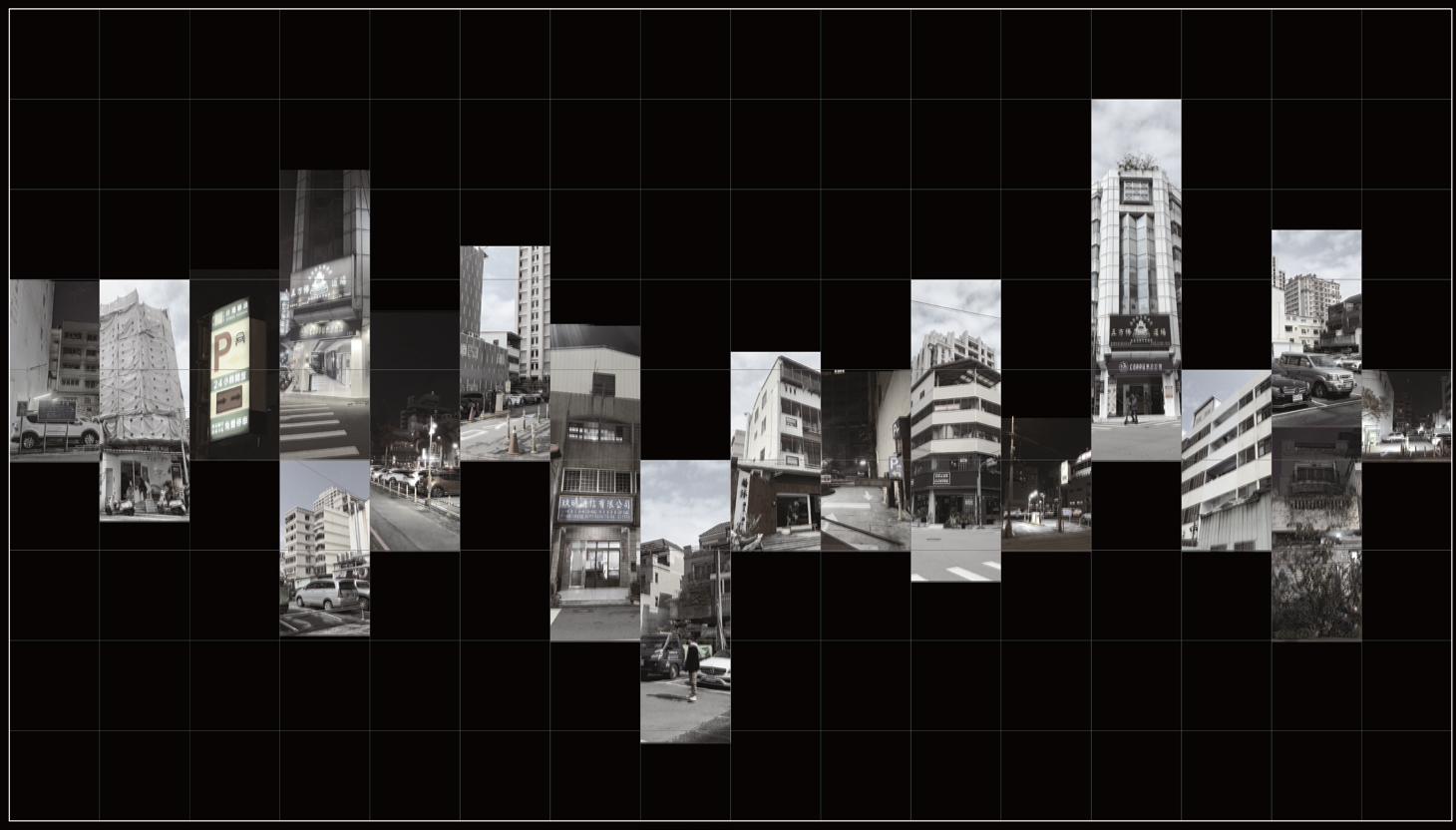

Take visit as the first step of the site analysis, we try to find the small elements that can reflect certain issues by photographing the facade of the street. In the observation, we get the following items:
A. What’s the reason for the "large number of parking lots"?
B. What’s the reason for the "large number of kindergartens"?
C. "The Ugly Appearance of Taiwan's Urban Jungle" - Why is it ugly (material?) and why people don't improve it (does it make the urban cortex feel more secure?)
D. "Differences in the texture of building and human perspective" - ig KOL often only takes pictures of shops. It can be found that the exquisite decoration of the shops on the first floor in the residential area is in great contrast with the iron windows upstairs.
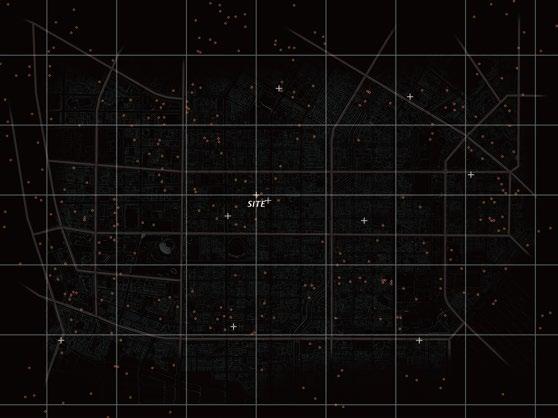
Among the four major problems, the problem of "large number of parking lots" is particularly obvious. We drew a 500-square-meter circle with a 10-minute walking distance around the base to form a flat point map and texture collage. It can be found that there are about 20 parking lots in the circle.
Out of curiosity, we then listed all the parking lots in Taichung City, tried to understand the frequency of this situation, and discussed the following directions:
1. Number of car parks
2. Types of parking lots
3. The main reasons for the large amounts of parking lots
After the investigation, it was found that the number of parking lots in many urban areas is as large as the site. However, among the types of car parks, the number of public and building car parks is only a minority, and more are private car parks built by landowners.
View of Bystander's:
- Most of the surrounding areas are old residential areas, where are no parking spaces in front the house, and the private parking lot of the apartments is also in short supply.
View of Landlord:
- Cars are the main means of transportation nowadays, and the commercial needs of car parks become higher.
- Expected Investment --- Building Business Land
What is “Building Business Land?

What is “Building Business Land
The Enclosure Movement was a push in the 18th and 19th centuries to take land that had formerly been owned in common by all members of a village, or at least available to the public for grazing animals and growing food, and change it to private land, usually with walls, fences or hedges around.
People with financial strength in the society will combine with each other to first judge the future development trend of the city and the development trend of the government. Even if the development of the land and the government investment seem to be out of reach, it is because of this that they can use a relatively low price. , buy a lot of land. The destination of these lands may be forest land, agricultural land, or even water and soil reservation land, and they are willing to buy them. After the purchase, these lands have been idle or underutilized for a long time. Their purpose is just to wait for the opportunity, and they do not care about the rental income at all. The land raiser may have a background in a consortium, but most of them are held in the name of a natural person, or even in the name of a human head, so that the best interests can enter their private pockets, while concealing others. The farming time is very long. During this time, the less powerful farmers just wait slowly, but usually use their political and business relationship to operate the government to accelerate the development.
When the development begins to take shape, or the city has developed to the land owner's land area, the land owner and other investors will start to search and purchase the peripheral areas of the cultivated land, which I call "enclosure". ". At this time, most of the large tracts of land near the land-raising area have fallen into the hands of land-raisers and late-entrants in the enclosure, and the price of the land has doubled.
Hunting Business Land While the formal development is to start, the remaining land is quite limited, and the real developers must use the method of "land hunting" to compete for the remaining land that has not fallen into the farmers and enclosures at a high price. Or let the farmers and enclosures sell the land in their hands at sky-high prices. Farmers usually only sell slowly, allowing the price of their land to continue to rise. Even if there are times when the rulers will be rotated, which will frustrate their land-raising plans, but in a democratic politics, the rulers must be rotated, and they will always wait until "their own people" come to power.
A. Anticipation psychology, rising of the future land price: In recent years, due to inflation, prices and housing prices are in the rising stage. Landlords generally have anticipation and wait for the peak of land prices before selling.
B. Construction costs today are too high: The construction cost is mainly based on labor prices and materials. Recently, due to the shortage of materials, labor prices have also risen, and both are at their peak.
C. Avoid being taxed: Article 173 of the "Land Law" states that if private vacant land is compulsorily used within a time limit, if it is not used within the time limit, an vacant land tax shall be levied before it is used in accordance with the law, which shall not be less than three times the payable land value tax and shall not exceed 10% of the payable land value tax. Times.
D. Simple short-term gains: Compared with placing land, land-raising methods such as parking lots can bring short-term benefits to the landlord. Although there are taxes, the total is still positive.
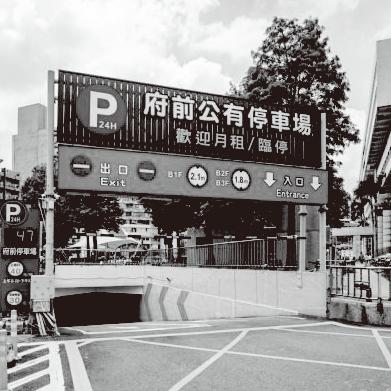

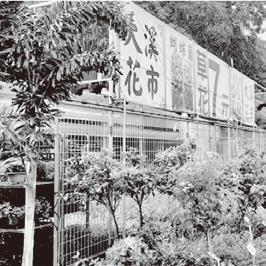
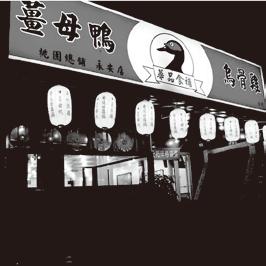


Discrimination method
This base is located in the fifth phase of Taichung City, which is an urban “ egg yolk area ”, and most of the land has been developed. Most of the remaining areas such as parking lots used for land cultivation are small, and the landlord's expectation is mostly derived from the benefits of the final development, and the source should be aimed at developers and construction.
Due to the limited land and the high price, there may be a resale trend after the landlord sells in the future, which has reached a short-term profit.
By analyzing the culture of raising land, we can verify that the base is located in the urban core, and the future development of the region is the direction of continuous discussion. Among them, the following cuts are made for the future urban development and the daily needs of residents:
Bottom-Up Approach:
A. Try to think about the future needs of the future urban core from the perspective of occupants
B. Daily space for residents
C. The transformation of urban core life in recent years
D. Possibilities of future use of the breeding space

The compact city is an urban planning and urban design concept, which promotes relatively high residential density with mixed land uses. It is based on an efficient public transport system and owns an urban layout which accords to its advocates – encourages walking and cycling, low energy consumption and reduced pollution. A large resident population provides opportunities for social interaction as well as a feeling of safety in numbers and "eyes on the street". It is also arguably a more sustainable urban settlement type than urban sprawl because it is less dependent on the car, requiring less (and cheaper per capita) infrastructure provision (Williams 2000, cited in Dempsey 2010).

Advocating the adoption of a high-density urban land use development model, it can curb urban sprawl to a large extent, thereby protecting the open space in the suburbs from development. On the other hand, it can effectively shorten the traffic distance, reduce people's dependence on cars, encourage walking and cycling, thereby reducing energy consumption, reducing exhaust emissions and even curbing global warming. In addition, high-density urban development can accommodate more urban activities within a limited urban area, improve the utilization efficiency of public service facilities, and reduce investment in urban infrastructure construction.

Advocating a moderately mixed urban land use, it is believed that the mixed layout of residential land, work land, leisure and entertainment, and public service facilities can provide more jobs within a shorter commuting distance. It can not only reduce traffic demand, but also reduce energy consumption , also strengthen the connection between people, which is conducive to the formation of a good community culture.
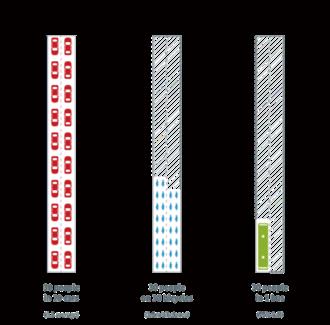
The low-density development of cities has increased people's traffic demand, increased commuting distance, and over-reliance on cars in travel mode, resulting in excessive vehicle exhaust emissions. Therefore, the theory emphasizes to give priority to the development of public transportation and to establish a convenient and fast urban public transportation system.
The picture shows the situation that often occurs every night in daily life:
Parents can't rest when they come home from work, but they still have to drag on the exhausted day to cook. "Delivery" will solve the troubles of these office workers.

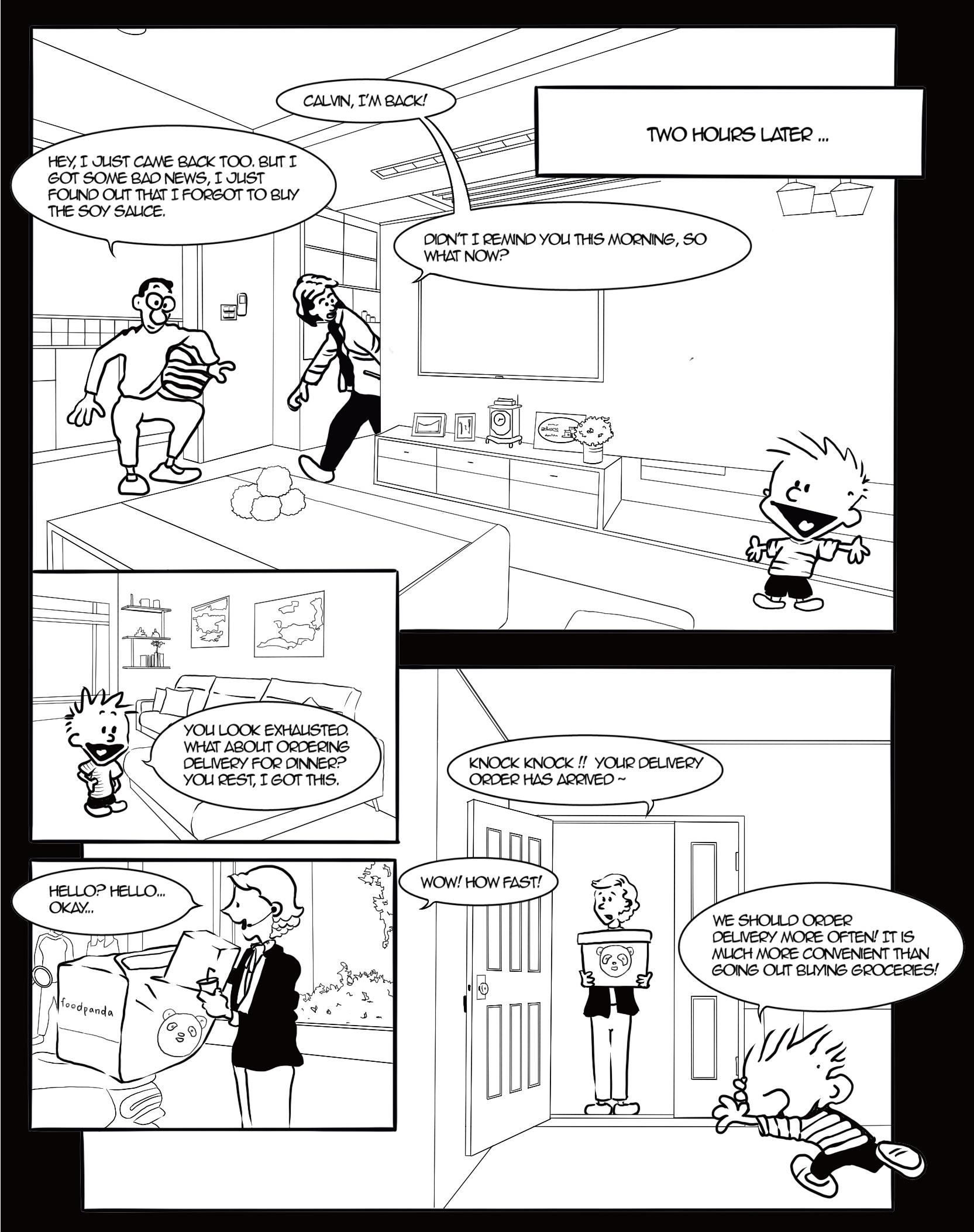


Traditional Market

Supermarket Delivery
In the Qing Dynasty, most of the markets in Taiwan were made up of open-air vendors. In 1694 (Kangxi 33 years), "Wan Fu Zhi: Vegetable Market, in front of Ningnan Prefecture, all kinds of vegetables, vegetables, melons and fruits in the village are gathered here: Bingwei City, and scattered near Chenchen.
During the Japanese occupation period, public markets began to be set up for merchants to sell all kinds of raw food and daily products. Today, the Red Opera in Ximending, Beishi, is the location of the first public city built in 1908 (Meiji 41).
Originated in 1916, the self-service retail store "Piggy Wiggy" opened by American Clarence Saunders gradually became popular during the economic panic of 1930. After the Second World War, supermarkets in Europe and America developed rapidly, replacing traditional markets and becoming the
The main store for fresh food and daily necessities. Supermarket for short.
In 1969, Ximen Supermarket in Taipei City opened. It was the first large-scale supermarket in Taiwan, but it mainly sold canned food and lacked raw food. In the same year, Dinghao Supermarket in Taipei City was established, selling raw products and frozen meat. , is the first fully functional supermarket
Pizza Hut landed in Taiwan in 1986, opened its first restaurant on Nanjing East Road in Taipei, and began its delivery map in 1991. It is not only the first online delivery service in Taiwan, but also the first in the world. Afterwards, chain pizza restaurants such as Domino’s and Naples began to divide up the online delivery market. Upon seeing this, Pizza Hut launched a delivery innovation at that time: “Hot Sao Bao”. The slogan "Hut, Hot Home" resounded in every household in Taiwan.
FoodPanda is an Internet food delivery service platform under Delivery Hero, a German delivery company. Founded in 2012, its operations cover many countries and regions in Asia and Europe. It was founded in Southeast Asia and operates in Singapore, Malaysia, Indonesia, Thailand, the Philippines and Taiwan.
The FoodPanda platform is used to provide food ordering services using a mobile app and website, sending the order to a partner restaurant, and then delivering the meal from the restaurant to the customer.

As the society change, the traditional market is gradually transformed. We divide the transformation methods into three types:
A. Method of purchase
B. trade goods
C. consumer
Among them, under the trend of delivery and pickup, consumers have changed from the general public to the delivery group. With the coexistence of transportation, market and delivery, will there be any kind of space that adapts to specific ethnic groups?
In the past, the dining behavior was originally either in-store dining or take-out. Until the epidemic these years, the delivery system has gradually become popular in order to reduce crowd interaction.
In the past, the dining behavior was originally either in-store dining or take-out. Until the epidemic these years, the delivery system has gradually become popular in order to reduce crowd interaction.
Current Delivery Range in Central Region
Possibilities of Future Delivery System
For the generalization of delivery, at the current stage of urban development, another major traffic group - deliverymen has been inserted. Facing the huge delivery population, delivery vehicles are often seen parked everywhere in the city, and road accidents are emerging one after another. The new generation of urban society is facing new traffic safety hazards. Therefore, in addition to the changes in the road system, we envision a new type of market, through the design of "convenient food delivery system" in the building as a transformation.
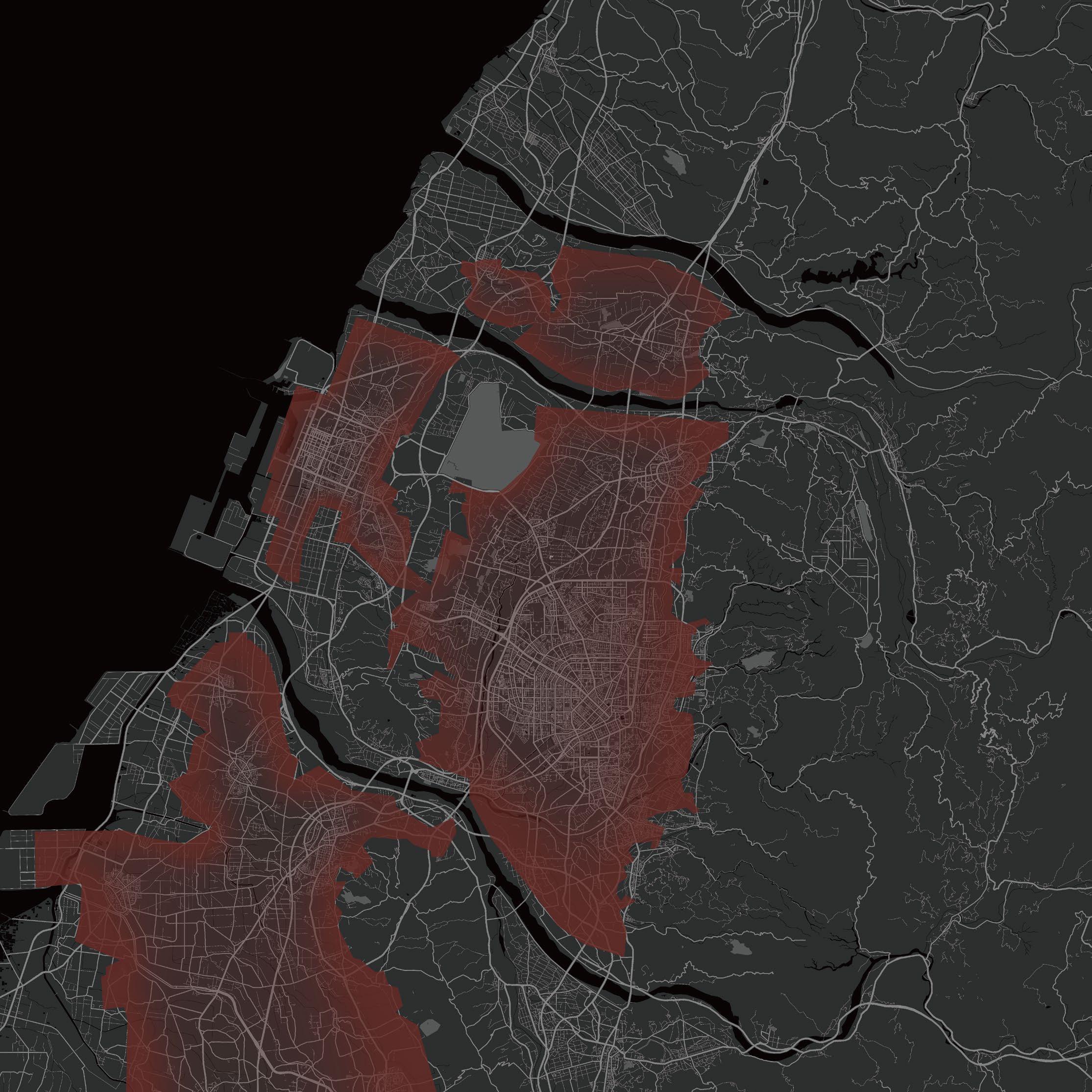
- Population composition
With the popularization of delivery systems, the frequency of using delivery services among all age groups is also increasing. Nearly 6 million people in Taiwan have used delivery apps. Among them, young people in their 20s and 30s have the highest usage rate, and men are also slightly higher. on women. 15% of the users of this group of food delivery services are heavy users, which is equivalent to 880,000 people who use the delivery service at least once a week, and some even multiple times a day, which is 12 times more frequent than light users.
- Family composition
With the change of Taiwan's social and economic environment, aging, declining birthrate, and marital relations, the traditional family structure has also changed. At present, "small family" has become the main force.
- Urban space rescale
With the development of the delivery system in recent years, business opportunities have gradually developed from the original cooked food to the direction of daily consumption. It can be said to be all-encompassing, satisfying the living habits of modern people in the post-epidemic era, and the point-to-point consumption behavior will not. Limited by the mode of movement, after the distance space excludes the consideration of money, the distance between space and space in the city is also redefined.
- Consumer space users change
The consumption model derived from delivery emphasizes convenience, and the pursuit is to quickly and accurately deliver products to consumers, so as to maximize the number of orders received. Under this structure, space users can start from the original consumption. The customer directly turned to the store and turned into the delivery person to the store. Based on this, we considered the possibility and feasibility of the combination of the delivery system and the space, with the goal of moving towards a more convenient city.
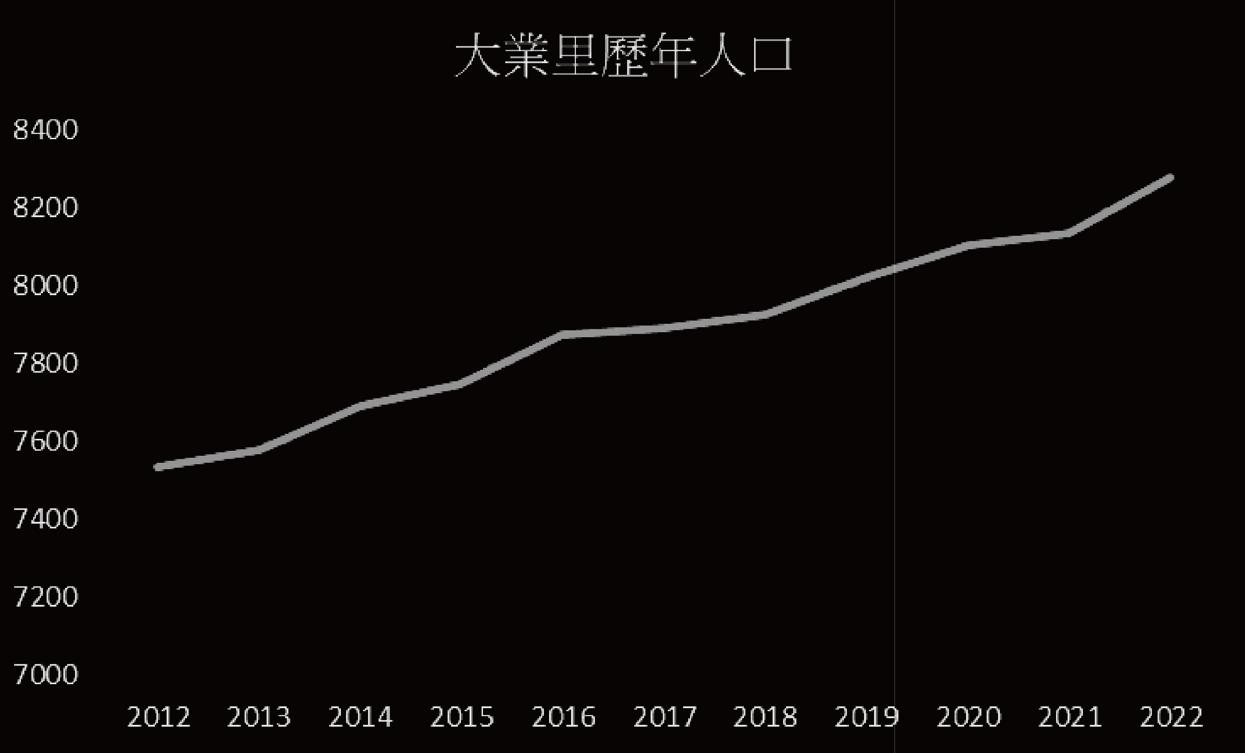


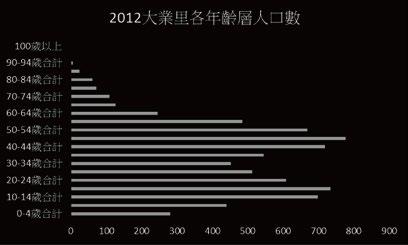
Base advantage:
This base is located in Phase 5. Compared with other areas in Taichung, it has developed earlier and is a mature and stable residential area. It is located at the junction of West District, Nantun District and Xitun District, with the Science Museum business district in the north and Qinmei in the east Eslite SOGO business district, Gome Pavilion Special Zone, Youfeng Park and Phase 8 Costco in the south, and Taichung Phase 7 rezoning area with many luxury houses in the west, the location is quite superior.
Daily needs:
Because it is located in a residential area and has frequent daily consumption behaviors, in order to meet the needs of life, the market has become one of the indispensable spaces. In addition to the traditional market, it also includes hypermarkets, convenience stores and other consumer spaces of different scales. As a demonstration area, think about the possibility of this type of consumption space in the future, in order to achieve a consumption space that has the same nature but can contribute to convenience. In line with the prevalence of online shopping and delivery services, think about how to integrate the delivery system and space. Combining them, we propose the transformation of the future market space.
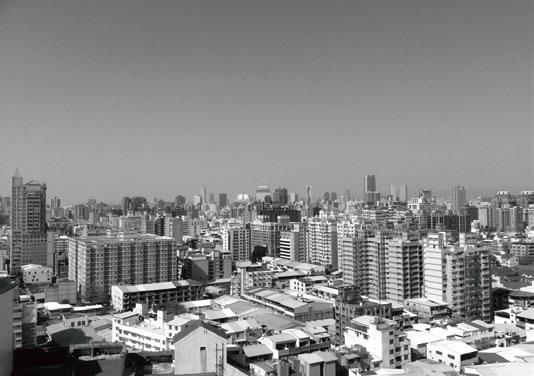
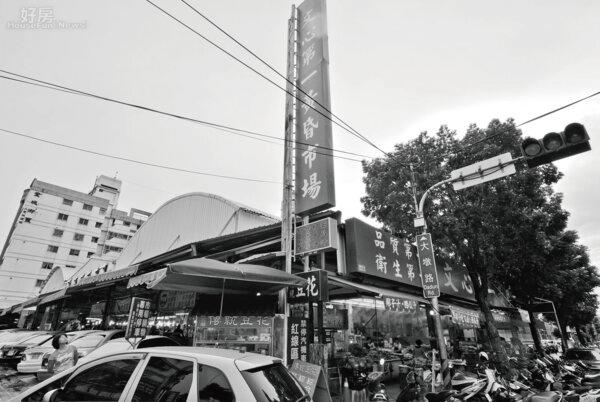

1. Diversification of payments
In the past, the consumption mode was biased towards cash payment, but with the prevalence of various emerging payment methods, users no longer use a single payment method, but can choose the corresponding payment method according to various needs. In order to improve the correlation between users, delivery platforms have also introduced various payment methods for consumers and stores to choose from.
2. Raw food delivery
The rise of food delivery platforms has not only attracted foreign eaters to use the platform to order cooked food, but has recently developed a new model, that is, raw food delivery, to attract healthy people or housewives (husbands and wives) who are pursuing health care and cooking at home. ) to join the market.
3. The business model of the virtual kitchen
Today, with the rise of delivery platforms, restaurants have more or less cooperative relations with delivery platforms, and in cities where land prices are soaring, the problem faced by operators is how to effectively use the indoor area of each ping so that they can can achieve maximum benefit.
4. Conversion of delivery medium
Delivery has changed the existing catering business model, but at the same time, the food delivery market itself is constantly changing. In the past, the medium of delivery was mainly done manually, but with the development of artificial intelligence, new delivery methods have emerged, one of which is the possibility of autonomous driving.

After the convenience delivery system was put in, we went back to the market to look at its existing problems, and one of them was food handling.
Compared with supermarkets, traditional markets are multi-merchant commercial spaces. Each merchant has its own wholesaler, and it is divided into different stores when selling, and if it is not sold out, it must be handled by itself. Under such a monolithic business, excessive food waste problems arise.
Therefore, we propose a circular economy system to try to improve this problem: integrate various merchants into a company, sell products from various wholesalers, just like the operation mode of a supermarket, and set up inspections or trends between raw and cooked food for classification and integration.
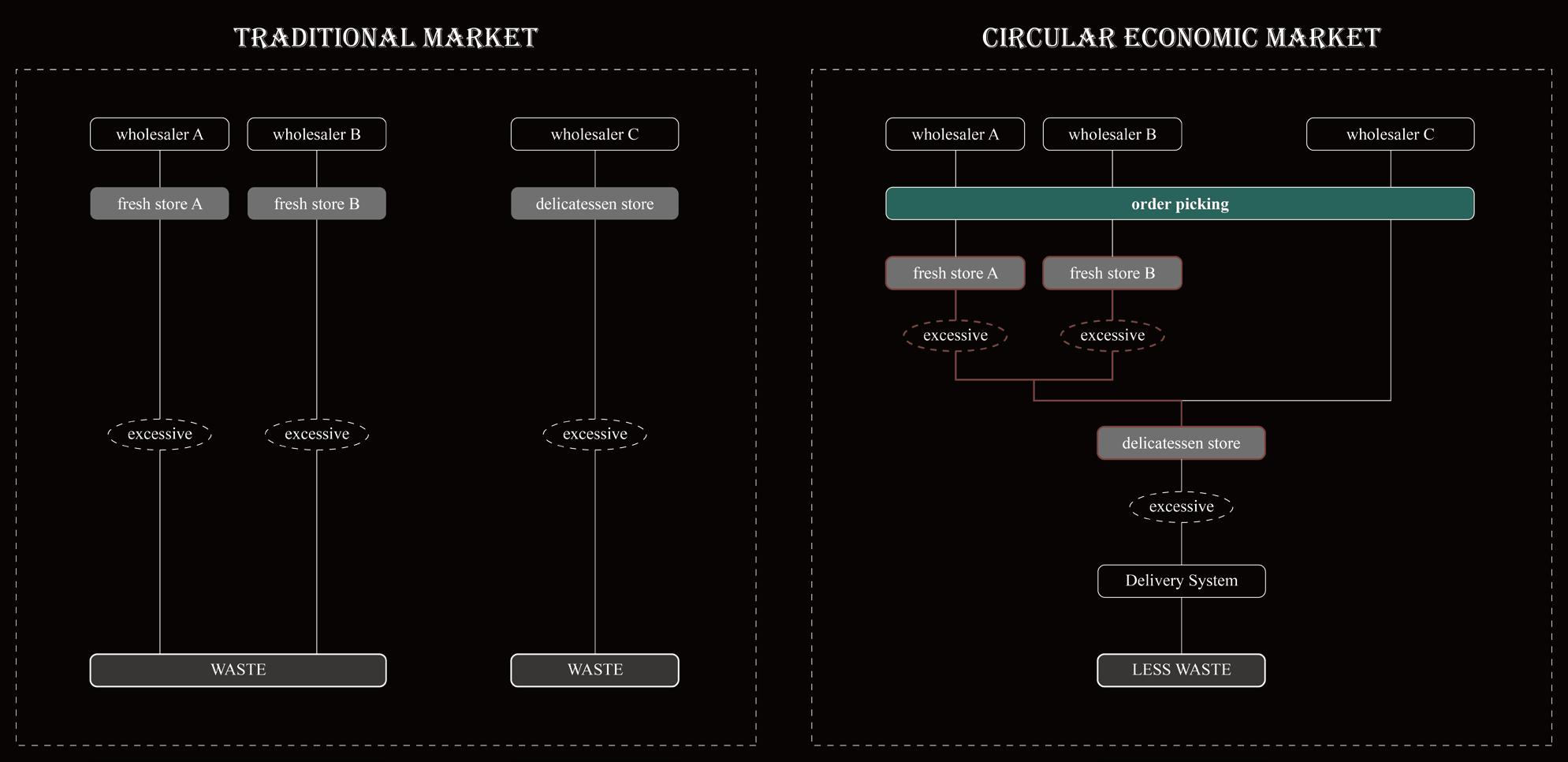
Performance art:
In the market space, in addition to the business, we try to put the daily art behavior into the space, hoping to get the interest of the market space. By observing the daily street behavior in recent years, we can find that the emergence of artistic performances such as magic, singing, hip-hop, etc. has intervened in the fast-paced life in the busy city.
However, these indispensable activating elements in the city often come from inadvertently. If this daily performance art performance is used as a special setting in the design, can it be used to sublimate the space? social art space.
Among the performing arts spaces, such as opera houses and concert halls are common today. Most of them are space settings with a single function, and there is no interaction between readers and performers. Returning to the original intention of everyday life, we hope to put in a "social art space" so that the performing arts form can facilitate crowd interaction and connection, and achieve this goal through the spatial flexibility of the black box theater.
Definition of black box:
Starting from the space text, "everyday" is the origin of our development and design. Starting from this characteristic, the type of performance that takes place in this black box space will be able to satisfy everyone, and the function and elasticity of the black box itself can meet this demand.
Initial idea:
We try to define the black box through activities, so that each activity has the possibility of happening in the black box. Because of this feature, we imagined the black box space as a large staircase, and placed it in the center of the whole building. Not only can the black box be seen from every space, but the black box itself can also be moved vertically to match the possible correspondence of each floor. It achieves the two characteristics of real flexibility and daily life, and at the same time becomes the connection of all spaces of the whole building.
